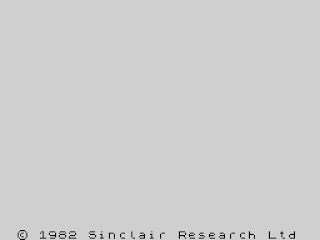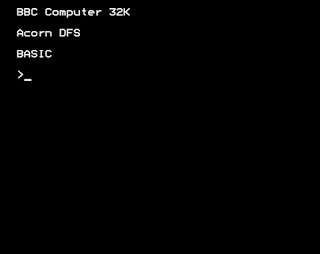Yesterday on ST Georges Day the humble UK computer the ZX-Spectrum reached it's 30th birthday, immediately reinforcing the fact that I'm getting old. Way back in 1982 I remember opening my first 16K ZX-Spectrum that had winged it's way from Sinclair Computers after a pre-order based on their previous foray into computing the ZX-81. It, of course, didn't work. Sinclair used to have a lot of issues when releasing new machines and I had to wait another eight weeks in crossed legged anticipation until it returned, was powered up and I immediately fell under it's trance of 15 shades: seven colours at two levels of brightness each, plus black, user definable characters, high resolution graphics (256x192) and of course sound, thorough the use of a single channel beeper underneath. I was easily pleased it seemed but then again computers were treated with awe in the early eighties and any kid who had one was greeted by adults as a wizkid or computer genius.
Many of us were not. We just had a handy tool that looked to parents as if it would teach us stuff but instead we primarily used it to play conversions of popular arcade games and occasionally programmed a simple routine to type into the shop display in WHSmiths.
10 PRINT "WHSMITH SUCKS!!! ";
20 GOTO 10
More complex stuff included the command INKEY$, which could be programmed within seconds to make sure the next time a key is pressed on the public display a rude word flashed up. Anyway I digress...
Computers before the ZX-Spectrum were for nerdy types and involved either a lot of soldering and breadboarding or you needed to have the patience of a saint to program the thing using a membrane keyboard whilst trying to do the equivalent of typing War and Piece onto a A4 page with your massive 1k of memory.
For those that are not familiar with computers of this period let me try and describe one for you. Imagine a bit of black plastic with a keyboard, the keyboard though has the feel of dead flesh as it's made out of rubber. Each key not only displays a letter but can also be changed to do four other options all illustrated on the same key making it incredibly clumsy. Now attach it to a television, plug it into a wall socket and turn it on.
Well done. You may now play with your new computer. Your options are :
1) Type in a game from a listing, it will take you nearly all day to do and when you run it the program will not work, but hey, think of all that programming experience you will get.
2) Load a game from tape. Attach a tape recorder (if you have just said what's that? then I suggest you skip the rest of this blog annd listen to your iPod), adjust the volume and try to LOAD a pre-written game from tape. It may take 7-700 minutes to load depending on the quality of your tape recorder, how many times you have to keep retrying it and if your sister has recorded the top 40 over the top of it.
3) Try to program more than 10 PRINT "HELLO"
4) Type BEEP 1,3, go hum a little then experiment trying to write music like Baa-Baa Blacksheep. BEEP 1,3; BEEP 1,3; BEEP 1,3... and so on.
5) Really learn to program and make £££!
It was the last one that fired a lot of people up, suddenly the ZX-Spectrum opened up a world to everyone where home programmers could write that popular game making them millionaires. Well, not quite, but a lot of people did it and a lot of people made a lot of money.
Classic games of the period include Jetpac, created by Ultimate Play The Game. Never heard of them? Well, they went on to program a slew of arcade games and the incredible Donkey Kong Country series under the name of RARE. Hungry Horace, Manic Miner, Jet Set Willy, Monty On The Run, Pyjamarama, Lords Of Midnight,Chuckie Egg and The Hobbit to name only a few from over the 50,000 that were released in this golden age of computing.
You can see the difference the Spectrum bought with it, here's a screen shot from the ZX-81, Sinclair's earlier machine...
So no wonder I nearly wet myself when this popped up...
Full colour!
OK, it all looked a little less exciting once it started but boy was it a good game for it's time. Pleasures you see were quite simple in Spectrum days. You got used to imagining quite a lot. If this was made again today we would have a fully pre-rendered moon scape, realistic meteors, 3D modelled astronauts and the whole game would be played out online against the world for a modest fee.
The beauty of simplicity though was part of it's charm and gamers used to take games to their heart and even produce fan art and maps to help other players. This one is for another excellent game Sabre Wulf, a sort of exploring maze game with weird flowers looking for parts of a amulet.
As you can see as soon as I start I could write all day about this so before I bore you to death let me show you some nerdy screens from back in the day. Do you know which machines they are from?










No comments:
Post a Comment